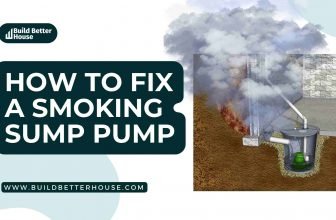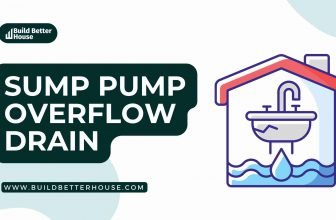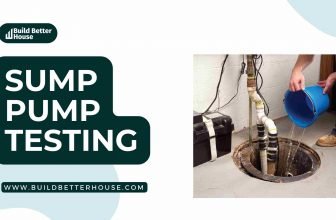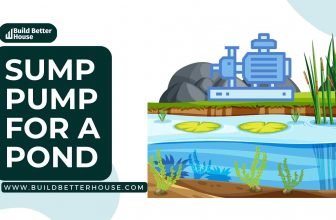How Long Does a Pump Last? Key Factors and Lifespan Expectations

A muscle pump is a familiar sensation for gym enthusiasts and bodybuilders. The feeling of tightness and increased size in your muscles is the result of increased blood flow during exercise. Generally, this coveted pump lasts about 2-3 hours after your workout. It can be extended by focusing on isolation exercises, remaining hydrated, and consuming sufficient carbohydrates.
Different pump types utilized in various applications such as HVAC systems and water pumps have varying lifespans. It’s essential to maintain and monitor your pump’s performance to maximize its efficiency and ensure it functions at an optimal level. Other factors, such as fueling the pump and adhering to proper maintenance practices, will also impact longevity and efficiency.

Key Takeaways
- Muscle pumps typically last 2-3 hours after workouts, but can be extended with specific techniques
- Different pump types have varying lifespans, with maintenance and performance affecting their longevity
- Proper care, fueling, and maintenance practices contribute to optimal pump function in various applications.
Types of Pumps
Water Pumps
Water pumps are crucial for different applications, such as moving water through plumbing systems, irrigating fields, or draining water from flooded areas. There are two main types of water pumps: submersible and centrifugal pumps.
Submersible water pumps are installed below water level and are designed to function underwater. They’re commonly used for wells and sump pumps. The submersible design prevents the motor from overheating, increasing the lifespan of the pump. The average lifespan of a well pump is around 8 to 15 years, depending on factors such as the frequency of the pump’s duty cycle.
Centrifugal water pumps are external pumps used to move water through a plumbing system. They rely on a spinning impeller to create a flow of water. Centrifugal pumps are often used in surface-level water applications like pools, ponds, and fountains.
Heat Pumps
Heat pumps are an essential component for heating and cooling systems in your home. They work by transferring heat energy between the indoor and outdoor environments. This process can heat your home during winter and cool it during summer. The average lifespan of a heat pump can be around 10 to 15 years, depending on factors like maintenance and usage. To prolong its lifespan, it’s essential to perform regular maintenance, including changing filters and cleaning the system.
Pumping in Exercise
In the context of exercise, “pumping” refers to the temporary swelling of muscles during and after a workout. The pump can be experienced in various muscle groups, depending on the exercises performed. This swelling effect typically lasts for 2-3 hours after a workout session. To achieve a good pump, focus on isolation exercises with sets of 8-12 reps and short rest periods. Additionally, staying well-hydrated and consuming adequate carbohydrates can help enhance the pump.
Sexual Pumps
Sexual pumps, such as the penis pump, are devices designed to help increase blood flow to erectile tissues or treat erectile dysfunction. A penis pump consists of a cylinder that fits over the penis and a motorized pump that creates a vacuum inside the cylinder. The vacuum promotes blood flow into the penile tissues, leading to an erection. It’s crucial to follow the instructions provided by the manufacturer and use the pump safely. The effects of a penis pump may vary for each individual and can be temporary in nature.
Factors Affecting Pump Lifespan
Maintenance and Cleaning
Regular maintenance and cleaning play a crucial role in extending your pump’s lifespan. Keeping your pump well-maintained and free of debris ensures its efficient operation and prevents premature wear and tear. It’s essential to follow the manufacturer’s recommended maintenance schedule, which typically includes inspecting and cleaning the pump’s components, as well as replacing parts when needed. By doing this, you can often prevent potential issues from escalating and prolong the life of your pump.
Rust and Corrosion
Over time, rust and corrosion can damage your pump’s components, which may negatively affect its performance and lifespan. Consider using materials that are resistant to rust and corrosion to protect your pump from the damaging effects of moisture and other environmental factors. Additionally, regularly inspect your pump for signs of rust and corrosion to address the issue before it worsens.
Model and Brand
The type of pump and the manufacturer’s quality play a significant role in determining the pump’s lifespan. While some models are designed to last 15-20 years, others may have an average life expectancy of 10 years or less, depending on the brand and model. It’s essential to choose a reputable brand that uses high-quality materials and offers a warranty to ensure the pump’s durability and longevity.
In summary, proper maintenance and cleaning, protection against rust and corrosion, and the selection of a reliable model and brand are some key factors that can significantly impact your pump’s lifespan. By carefully considering these factors and following the recommended maintenance guidelines, you can prolong the life of your pump and ensure its efficient operation.
Pump Efficiency and Performance
Energy Consumption
Pump efficiency plays a significant role in determining the lifespan of a pump. Centrifugal pumps can reach an efficiency of up to 94%, but typically maintain an efficiency of 55% for small pumps and 70% for larger pumps. Energy consumption is crucial to consider when evaluating the efficiency of a pump, especially in industries where pumps are heavily relied upon, such as paper mills. These facilities consume up to 30% of their energy usage to operate pumps.
Pump Operation
The operational lifetime of a pump is highly dependent on its operating conditions. A higher overall operational head requires a pump to do more work, leading to increased wear and tear. Consequently, this shortens the pump’s lifespan. However, pumps designed for heavy-duty operations incorporate specific design features that enable them to handle the increased demands of such environments.
When evaluating your pump’s efficiency, consider the following factors:
- Power Input: The electric motor supplies the pump power. To calculate the power input, use the following formula: P_S = 1.732 × V × I × PF × Motor Efficiency × Coupling Efficiency, where V is the measured motor voltage in volts, I is the measured motor current in amperes, and PF is the power factor.
- Hours of Operation: The number of hours a pump is in operation affects its longevity. Minimizing unnecessary usage and optimizing efficiency by matching the pump’s capacity to your application can help extend its operational lifespan.
By taking these factors into account and monitoring your pump’s performance, you can make informed decisions about maintenance and replacement needs. This, in turn, will help ensure that your pump operates at its optimal efficiency for a longer period of time.
Muscle Pump in Exercise
Transient Hypertrophy
During exercise, you may notice your muscles looking larger and more defined. This is known as a muscle pump, which is a result of transient hypertrophy. It occurs when blood flow increases to your muscles, filling them with more blood than usual. This temporary enlargement can last for 2-3 hours after your workout. To maximize your muscle pump, focus on high-volume exercises with a moderate weight and a higher rep range, around 8-12 reps.
Compound and Isolation Movements
Incorporating both compound and isolation movements into your workout routine can optimize muscle growth and prolong your muscle pump. Compound exercises, such as squats and bench presses, engage multiple muscle groups at once, promoting overall muscle growth. These exercises also increase blood flow to the targeted muscles, enhancing your muscle pump.
On the other hand, isolation exercises focus on a single muscle group, such as bicep curls or leg extensions. Isolation exercises can help you target specific muscles and lead to a more pronounced muscle pump. To make your pump last longer, try focusing on isolation exercises with shorter rest periods and maintaining time under tension. This can lead to increased blood flow and muscle fatigue, contributing to a more prominent muscle pump.
Tips to enhance your muscle pump:
- Stay well-hydrated before and during your workout
- Consume a diet rich in carbohydrates to fuel your muscles
- Incorporate both compound and isolation exercises in your routine
- Keep your rest periods short between sets (30-60 seconds)
- Focus on maintaining tension in your muscles during your exercises
By considering these factors, you can optimize your muscle pump during exercise and enjoy the benefits of transient hypertrophy. Remember, while the muscle pump is a satisfying and motivating aspect of your workout, it plays a small role in long-term muscle growth. Ensure you also prioritize progressive overload, proper nutrition, and recovery for sustainable progress.
Fueling the Pump
Carbohydrates
Carbohydrates play a crucial role in providing energy for your body. As you consume carbohydrates, your body converts them into glucose, which is then stored as glycogen in your muscles and liver. When engaging in physical activities, your body utilizes glycogen to provide the necessary energy to keep your muscles working efficiently. To support optimal fuel efficiency in your pump, make sure to maintain a sufficient intake of carbohydrates in your diet. Consuming carbohydrates before and after workouts can aid in replenishing glycogen stores, helping you maintain sustained energy levels.
Protein
Protein is an essential part of the recovery process for your muscles after a workout. As you exercise, muscle fibers break down, and it is the role of protein to help repair and build them back up. Including protein in your diet assists in promoting optimal muscle recovery, while also supporting the continuous operation of your pump. Aim to consume a well-balanced mix of protein sources, such as lean meats, fish, legumes, and dairy products, to ensure a comprehensive supply of amino acids, the building blocks of proteins.
Hydration
Proper hydration is a critical component of supporting your pump’s longevity and efficiency. Dehydration can result in decreased blood flow, hindering the pump’s ability to provide nutrients and oxygen to your muscles. This can lead to reduced performance and possible premature pump failure. Make it a priority to regularly drink water throughout the day, even when you’re not feeling thirsty. During physical activities, ensure that you stay well-hydrated by drinking water before, during, and after your workout to support optimal pump performance.
Blood Flow and Nutrient Delivery
Oxygen
During your workout, your muscles need an increased supply of oxygen to produce energy. This is because the process of muscle contraction requires oxygen. As you exercise, your heart pumps more blood to the working muscles, ensuring that they receive an adequate supply of oxygen. The blood vessels in your muscles also dilate, allowing more blood flow and oxygen to reach the muscle tissue. This increased blood flow contributes to the “pump” you feel in your muscles as they swell and become engorged with blood.
It is important for you to maintain a steady supply of oxygen to your muscles during your workout, as this will help prevent the build-up of lactic acid, which can cause muscle fatigue and soreness. Ensuring that you are breathing properly and taking in enough oxygen will help prolong the pump and keep your muscles working efficiently.
Nutrients
In addition to oxygen, your muscles also need nutrients during a workout in order to function optimally. Nutrient delivery to your muscles is achieved through the same increase in blood flow that supplies oxygen. Essential nutrients such as amino acids and glucose are transported to the working muscles to provide a source of energy and support muscle growth and repair.
During a workout, blood flow is redirected from less active organs to the muscles you’re exercising, allowing your muscles to receive more nutrients than they do at rest. This increase in nutrient delivery helps to improve overall muscle function, endurance, and recovery.
To ensure that your muscles have the nutrients they need, it’s important to fuel your body properly before and after exercise. Consuming a balanced diet that includes protein, carbohydrates, and healthy fats is crucial for providing your muscles with the nutrients they need to perform at their best and recover post-workout.
In summary, the pump you experience during a workout is a result of increased blood flow to the working muscles, delivering essential oxygen and nutrients. By paying close attention to your breathing and maintaining a balanced diet, you can help ensure that your muscles receive the necessary support for optimal performance and growth.
Resistance Training and Gains
Drop Sets
Drop sets are an effective method to enhance your muscle pump and stimulate gains. During resistance training, perform a set with a heavier weight until you reach muscle failure, then immediately drop the weight and continue with a lighter weight until failure again. This technique increases blood flow to the muscle, creating a fuller pump.
When incorporating drop sets into your routine, consider these tips for optimal results:
- Consistency: Incorporate drop sets into your regular training program for sustained benefits.
- Muscle groups: Focus on using drop sets for smaller muscle groups like biceps and triceps for a better pump effect.
- Recovery: Allow ample time for recovery to prevent overtraining and injury.
Supersets
Supersets involve pairing two or more exercises targeting different muscle groups and performing them back-to-back without rest, further enhancing your pump. This combination of exercises increases blood flow and muscle volume, contributing to your gains.
To make the most of supersets, follow these guidelines:
- Exercise selection: Choose exercises targeting opposing or unrelated muscle groups for a balanced workout.
- Intensity: Maintain a high intensity during supersets to maximize your pump and muscle growth.
- Rest: Rest 60-90 seconds between supersets to maintain energy levels and prevent fatigue.
Remember, consistently incorporating these techniques into your resistance training routine can help prolong your muscle pump, enhance muscle growth, and improve your overall gains.
Pump Impact on Sexual Function
Erections
Using a penis pump can indeed help you achieve an erection firm enough for sex. However, it’s important to note that the effects of using a penis pump only last for about 10 to 15 minutes. You can extend this duration by using a rubber ring to maintain the erection. Keep in mind that it takes practice and correct use to achieve the desired results without causing any complications or side effects.
Permanent Changes
Although some users experience temporary gains in girth right after pumping, permanent gains are usually limited. The reported permanent gains in girth range from 0.5 to 0.8 inches depending on the quality of the erection. This enhancement occurs over a period of several months. Remember that using a penis pump safely and responsibly is crucial to avoid any potential harm or injury.
HVAC System Maintenance
Proper maintenance of your HVAC system not only helps extend the life of your heat pump but also ensures that it operates efficiently and effectively. In this section, we’ll discuss some key aspects of HVAC maintenance, including air filter replacement, obstruction clearance, and maintaining proper airflow.
Air Filter Replacement
To keep your HVAC system running smoothly, it’s essential to replace your air filter regularly. A dirty air filter can reduce airflow, forcing your system to work harder and potentially leading to repairs or a shorter lifespan. Depending on the type of filter and the specific needs of your home, you should generally replace your filter every 30 to 90 days.
- Standard filters: Replace every 30-60 days
- Pleated filters: Replace every 90 days
- Specialized filters: Follow manufacturer’s recommendations
Regular air filter replacement can help prevent dust and debris buildup in your system, improving indoor air quality and ensuring efficient operation.
Obstructions and Airflow
Ensuring proper airflow around your HVAC system is crucial for its performance and longevity. Obstructions near your outdoor unit can impede air circulation and negatively affect your system’s efficiency. To maintain proper airflow:
- Keep a clear area of at least 2-3 feet around your outdoor unit.
- Remove debris, such as leaves, grass clippings, and dirt, from the exterior unit regularly.
- Trim back vegetation or shrubbery near the unit to prevent airflow obstructions.
By maintaining proper airflow around your HVAC system, you can reduce wear and tear on the unit and help avoid costly repairs or replacement.
Inspecting Ducts and Vents
The ductwork and vents in your home play a crucial role in distributing conditioned air throughout your space. Regular inspection and maintenance of these components are essential to ensure efficient operation and prevent problems that could lead to costly repairs.
- Check for leaks or disconnected sections in your ductwork and have them repaired.
- Ensure vents are not blocked by furniture, curtains, or other objects.
- Clean vents periodically to remove dust and debris buildup.
By addressing these aspects of HVAC maintenance, you can ensure that your heat pump operates efficiently, prolong its lifespan, and minimize the need for repairs or replacement.
Pump Replacement and Investment
Costs
When considering pump replacement, it’s essential to factor in the costs associated with the process. The type of pump you need plays a significant role in determining the overall expense. On average, water well pumps can cost anywhere from $200 to $500, depending on the pump type.
There are three common types of well pumps:
- Shallow-well jet pumps: These centrifugal pumps are the least expensive, coming in around $200 on average.
- Deep-well jet pumps: These pumps are more robust and can reach greater depths, with price points typically higher than shallow-well jet pumps.
- Submersible well pumps: These pumps can work in more extensive and deeper wells, but they are also the most expensive in terms of upfront costs.
Longevity
Investing in a high-quality pump is crucial for improving its lifespan. If maintained properly and regularly, a good pump can last for a considerable amount of time. For example:
- Water pumps: These can last anywhere between 60,000 and 90,000 miles, depending on the make and model of the vehicle they are used in
- Sump pumps: These tend to last around 7 to 10 years with proper maintenance
- Sewage ejector pumps: New ejector pumps can last between 7 and 10 years, but with routine maintenance and annual inspections, some ejector pumps can last over 20 years
Of course, pump longevity is significantly impacted by factors such as pump type, usage, and environment. In addition to proper maintenance, paying attention to any unusual noises, vibrations, or changes in suction performance can help identify potential issues early, ultimately extending your pump’s service life.
In conclusion, to ensure your investment in a pump is worthwhile, it’s essential to consider both the upfront costs and the expected longevity of the pump. Proper maintenance and regular inspections will help maximize your pump’s lifespan and protect your investment.
Frequently Asked Questions
How long does a bicep pump last?
A bicep muscle pump typically lasts for 2-3 hours after a workout. This duration can vary depending on factors such as individual muscle response, exercise intensity, and nutrition.
What factors affect the duration of a muscle pump?
Several factors can influence the duration of a muscle pump, including the type of exercises you perform, your hydration levels, the amount of carbohydrates you consume, and your overall muscle conditioning. Additionally, genetics can play a role in how long the pump lasts for different individuals.
How can I maintain a longer-lasting pump?
To maintain a longer-lasting pump, focus on isolation exercises with sets of 8-12 reps and short rest periods. Staying well-hydrated and consuming an ample amount of carbohydrates can also help prolong the pump. Remember to avoid cold environments, such as cold tubs, which can cause constriction of blood vessels, reducing the pump effect.
Why does the pump disappear quickly for some people?
The pump may disappear quickly for some people due to factors such as poor hydration, insufficient carbohydrate intake, or inadequate muscle conditioning. In some cases, genetics may also be responsible for a faster decline in the pump effect.
What role does a workout play in sustaining a pump?
The type and intensity of a workout play a significant role in sustaining a muscle pump. Engaging in isolation exercises, with a focus on higher reps and shorter rest periods, can help prolong the pump. Increasing blood flow to the muscles through exercise is the primary factor in achieving and maintaining a muscle pump.
Does the extent of a pump correlate with muscle growth?
While a pump can be an indicator of increased blood flow to working muscles, it is not a direct measurement of muscle growth. Muscle growth occurs over time through consistent training, proper nutrition, and adequate recovery. The pump effect is temporary and does not guarantee long-term gains in muscle size.






